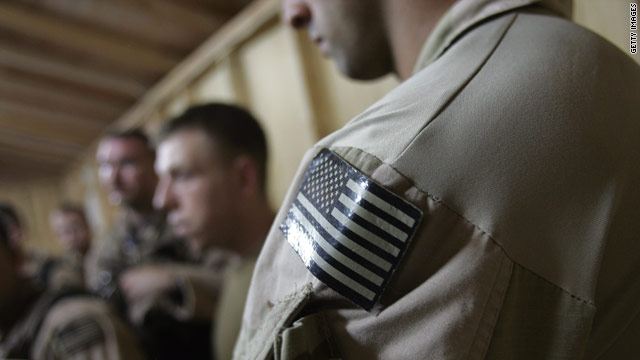
American special operations such as Navy SEALS focus on 'high-value targets' in commando raids.
The Navy SEAL mission that killed Osama bin Laden highlights the return on investment the United States gets from special operations forces, analysts said.
Special operations forces receive about $10 billion, or 2 percent, of an annual defense budget of $670 billion, said Travis Sharp, researcher with Center for a New American Security, a think tank that focuses on terrorism and irregular warfare techniques.
"Special operations have become such a large part of what we do," said Sharp. "They've come to dominate actually, a lot of the policy agendas for people hear in Washington."
The drawn-out deployment in Afghanistan proves terrorism isn't fought with 100,000 boots on the ground, said Democratic Congressman John Garamendi, who serves on the House Armed Services Committee. It's deep intelligence gathering coupled with smaller special ops forces, whose skill set proves invaluable in sensitive missions targeting terrorists.
"It's quick, it's stealthy, it's deadly and it’s effective,” he said.
Special operations forces have been around for a while. The Army’s elite Green Berets formed in 1952 and the NAVY created the first SEAL team in 1962. Vietnam and the guerrilla warfare tactics of the North Vietnamese army made it apparent to military leaders and strategists that it wasn't about how much territory you controlled, but rather, finding and eliminating an elusive enemy.
The SEAL Team 6 was created in 1980 after a failed mission to rescue Americans in Iran. The Air Force created a special operations wing in 1983. The Marines have the youngest special forces command, which was formed in 2005.
Special operations forces receive about $10 billion, or 2 percent, of an annual defense budget of $670 billion, said Travis Sharp, researcher with Center for a New American Security, a think tank that focuses on terrorism and irregular warfare techniques.
"Special operations have become such a large part of what we do," said Sharp. "They've come to dominate actually, a lot of the policy agendas for people hear in Washington."
The drawn-out deployment in Afghanistan proves terrorism isn't fought with 100,000 boots on the ground, said Democratic Congressman John Garamendi, who serves on the House Armed Services Committee. It's deep intelligence gathering coupled with smaller special ops forces, whose skill set proves invaluable in sensitive missions targeting terrorists.
"It's quick, it's stealthy, it's deadly and it’s effective,” he said.
Special operations forces have been around for a while. The Army’s elite Green Berets formed in 1952 and the NAVY created the first SEAL team in 1962. Vietnam and the guerrilla warfare tactics of the North Vietnamese army made it apparent to military leaders and strategists that it wasn't about how much territory you controlled, but rather, finding and eliminating an elusive enemy.
The SEAL Team 6 was created in 1980 after a failed mission to rescue Americans in Iran. The Air Force created a special operations wing in 1983. The Marines have the youngest special forces command, which was formed in 2005.
Δεν υπάρχουν σχόλια:
Δημοσίευση σχολίου